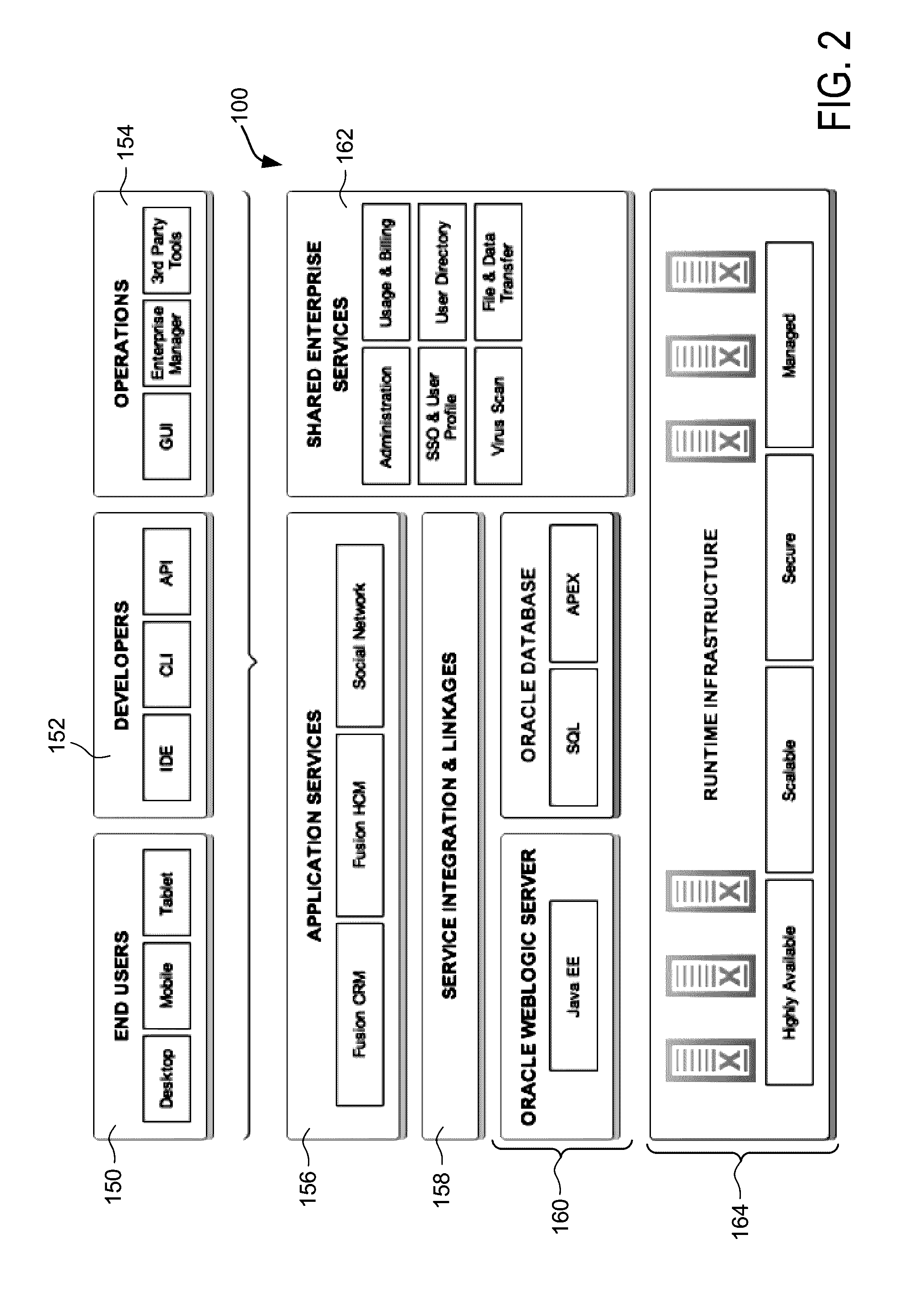Automatic anomaly detection and resolution system
a technology of automatic anomaly detection and resolution system, which is applied in the direction of fault response, data switching network, instruments, etc., can solve the problems of large size of data centers supporting cloud computing systems, high labor intensity in provisioning resources for providing such cloud services, and many manual processing steps, so as to minimize, if not avoid, service level agreement (sla) violations, the effect of maximizing the sla compliant period
- Summary
- Abstract
- Description
- Claims
- Application Information
AI Technical Summary
Benefits of technology
Problems solved by technology
Method used
Image
Examples
Embodiment Construction
[0041]In the following description, for the purposes of explanation, specific details are set forth in order to provide a thorough understanding of embodiments of the invention. However, it will be apparent that various embodiments may be practiced without these specific details. The figures and description are not intended to be restrictive.
[0042]In certain embodiments, techniques are provided (e.g., a method, a system, non-transitory computer-readable medium storing code or instructions executable by one or more processors) to automatically detect and resolve anomalies in a computing system such as a cloud infrastructure system.
[0043]I. Cloud Infrastructure System
[0044]FIG. 1 is a logical view of a cloud infrastructure system according to one embodiment. A cloud infrastructure system may provide access to a suite of applications, middleware and database service offerings that are delivered to a customer in a self-service, subscription-based, elastically scalable, reliable, highly ...
PUM
 Login to View More
Login to View More Abstract
Description
Claims
Application Information
 Login to View More
Login to View More - R&D
- Intellectual Property
- Life Sciences
- Materials
- Tech Scout
- Unparalleled Data Quality
- Higher Quality Content
- 60% Fewer Hallucinations
Browse by: Latest US Patents, China's latest patents, Technical Efficacy Thesaurus, Application Domain, Technology Topic, Popular Technical Reports.
© 2025 PatSnap. All rights reserved.Legal|Privacy policy|Modern Slavery Act Transparency Statement|Sitemap|About US| Contact US: help@patsnap.com



